|
|  |
Most heavy chemical elements are formed in nuclear fusion reactions in
stars. Also in the centre of our Sun, hydrogen is ”burned“
to create helium, thereby releasing energy. Heavier elements are then
produced from helium if the star is more massive than our Sun. This
process, however, only works up to iron; further fusion reactions do
not yield any net energy gain. Therefore heavier elements cannot be
produced in this fashion. Instead, they can be assembled when neutrons
are captured onto ”seed“-nuclei, which then decay
radioactively.
This involves two main processes: the slow neutron capture
(s-process), which takes place at low neutron densities inside stars
during their late evolution stages, and the rapid neutron capture
(r-process), which needs very high neutron densities. Physicists know
that the r-process is responsible for producing a large fraction of
the elements much heavier than iron (those with nuclear mass numbers
A>80), including platinum, gold, thorium, and uranium (Fig. 1). However, the
question of which astrophysical objects can accommodate for this
r-process remains to be answered.
”The source of about half of the heaviest elements in the
Universe has been a mystery for a long time,“ says Hans-Thomas
Janka, senior scientist at the Max Planck Institute for Astrophysics
(MPA) and within the Excellence Cluster Universe. ”The most
popular idea has been, and may still be, that they originate from
supernova explosions that end the lives of massive stars. But newer
models do not support this idea.“
Violent mergers of neutron stars in binary systems (see note 1) offer an
alternative scenario, when the two stars collide after millions of
years of spiralling towards each other. For the first time, scientists
at the MPA and the ULB have now simulated all stages of the processes
occurring in such mergers by detailed computer models (Fig. 2). This includes
both the evolution of the neutron star matter during the relativistic
cosmic crashes and the formation of chemical elements in the tiny
fraction of the whole matter that gets ejected during such events,
involving the nuclear reactions of more than 5000 atomic nuclei
(chemical elements and their isotopes (see note 2)).
”In just a few split seconds after the merger of the two neutron
stars, tidal and pressure forces eject extremely hot matter equivalent
to several Jupiter masses,“ explains Andreas Bauswein, who
carried out the simulations at the MPA. Once this so-called plasma has
cooled to less than 10 billion degrees, a multitude of nuclear
reactions take place, including radioactive decays, and enable the
production of heavy elements. ”The heavy elements are `recycled'
several times in various reaction chains involving the fission of
super-heavy nuclei, which makes the final abundance distribution
become largely insensitive to the initial conditions provided by the
merger model,“ adds Stephane Goriely, ULB researcher and nuclear
astrophysics expert of the team (see also Fig. 3). This agrees well with previous
speculations that the reaction properties of the atomic nuclei
involved should be the decisive determining factor because this is the
most natural explanation for the essentially identical abundance
distributions of the heaviest r-process elements observed in many old
stars and in our solar system.
The simulations showed that the abundance distribution of the heaviest
elements (with mass numbers A>140) agrees very well with the one
observed in our solar system. If one combines the results of the
simulations and the estimated number of neutron star collisions in the
Milky Way in the past, the figures indicate that such events could in
fact be the main sources of the heaviest chemical elements in the
Universe.
The team plans now to conduct new studies to further improve the
theoretical predictions by refined computer simulations that can
follow the physical processes in even more detail. On the other hand,
observational astronomers look out for detecting the transient
celestial sources that should be associated with the ejection of
radioactive matter in neutron star mergers. Because of the heating by
radioactive decays, the ejecta will shine up with almost the
brightness of a supernova explosion — albeit only for a few
days. A discovery would mean the first observational hint of freshly
produced r-process elements in the source of their origin. The hunt is
on!
Notes:
- Neutron stars are extremely compact remnants of stars, forming when a
massive star reaches the end of its lifetime. The stellar core
collapses while the outer layers are ejected in a supernova
explosion. The neutron star at the centre has about one and a half
times the mass of our Sun, but a diameter of only 20—30
kilometres. Sometimes in a binary star system two neutron stars form
by two supernova explosions and then orbit each other. Due to energy
loss, the two stars will eventually merge. These events, however,
should be rare. Astronomers estimate that the merging of two neutron
stars should occur about once every 100 000 years in a galaxy like
the Milky Way.
- Isotopes are atoms with the same number of protons in their nucleus
but different numbers of neutrons.
Original publication:
Stephane Goriely, Andreas Bauswein and Hans-Thomas Janka,
"r-process nucleosynthesis in dynamically ejected matter of neutron star mergers",
2011 ApJ 738 L32
 http://iopscience.iop.org/2041-8205/738/2/L32 http://iopscience.iop.org/2041-8205/738/2/L32
Contact:
Dr. Hans-Thomas Janka
Max Planck Institute for Astrophysics, Garching
Tel.: +49 89 30000-2228
email: hjanka mpa-garching.mpg.de mpa-garching.mpg.de
Dr. Andreas Bauswein
Max Planck Institute for Astrophysics, Garching
Tel.: +49 89 30000-2236
email: abauswein mpa-garching.mpg.de mpa-garching.mpg.de
Dr. Hannelore Hämmerle
Press Officer
Max Planck Institute for Astrophysics, Garching
Tel. +49 89 30000-3980
E-mail: hhaemmerle mpa-garching.mpg.de mpa-garching.mpg.de
|


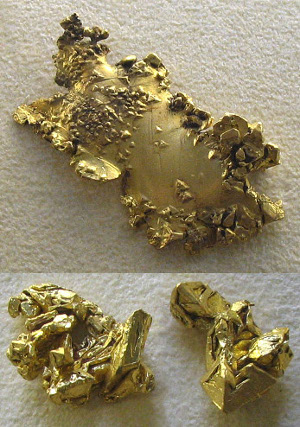
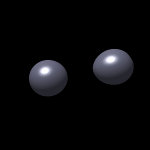
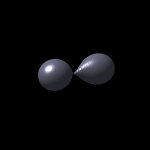
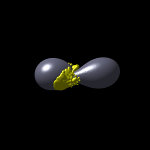

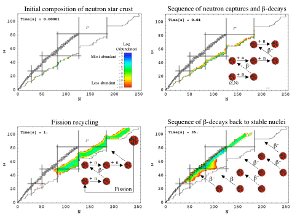
 mpa-garching.mpg.de
mpa-garching.mpg.de